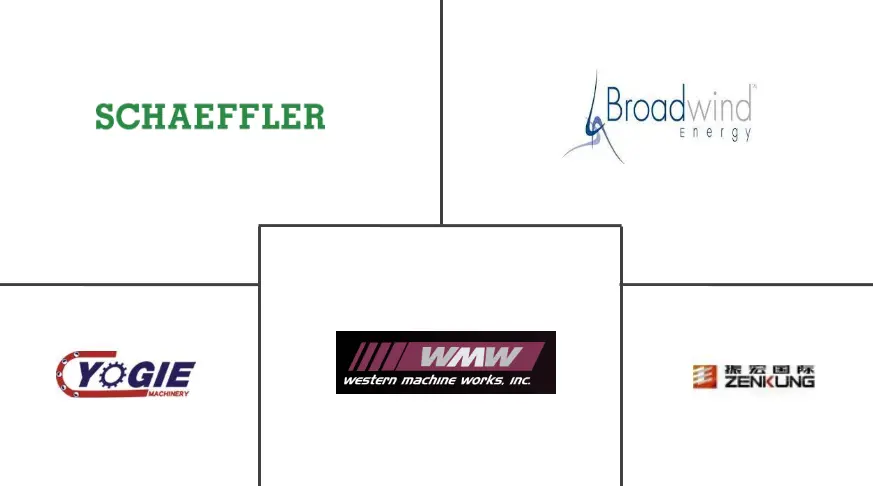Wind Turbine Shaft Market Size and Share
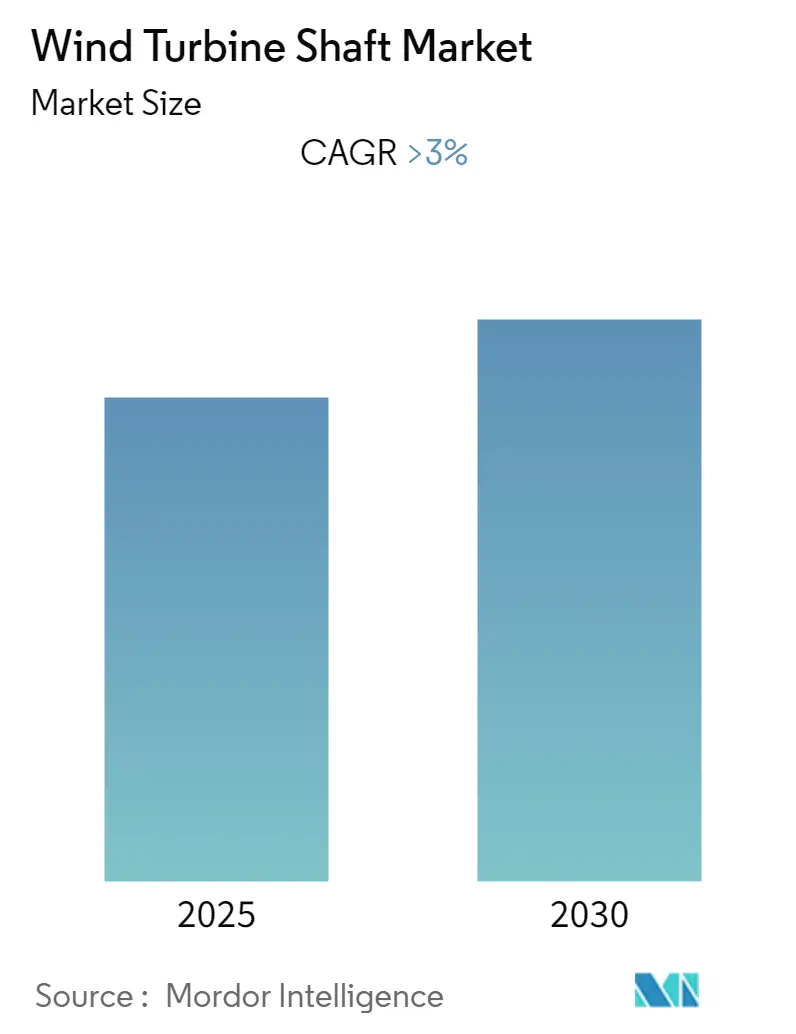
Wind Turbine Shaft Market Analysis by Mordor Intelligence
The Wind Turbine Shaft Market is expected to register a CAGR of greater than 3% during the forecast period.
- The wind turbine shaft market in Asia-Pacific (especially the South-Eastern countries), is expected to have an immense opportunity, in untapped areas. The rising demand for energy in the south-eastern countries of Asia-Pacific depends upon economic growth, increasing population, and urbanization. The governments in these countries have set a target for wind energy deployment that would drive the Asia-Pacific wind turbine shaft market and is expected to create an opportunity for the market to grow in the future.
- The onshore turbine is the leading and dominating segment among the wind turbine market. The segment has the majority share from the Asia-Pacific region, with China as the leading player.
- The Asia-Pacific is one of the prominent wind turbine shaft markets with maximum wind energy installation capacity. China is a prominent country within the region that covers the majority market share of wind turbines. With nearly 36% and 20% of the total onshore and offshore wind turbine installed capacity, the country is dominating the wind turbine shaft market.
Global Wind Turbine Shaft Market Trends and Insights
Onshore Wind Turbine Shaft to Dominate the Market
- A wind turbine consists of various components such as blades, controller, brake, gearbox, generator, shafts, and a few others. Shafts in wind turbines are segregated into two types i.e., low-speed shaft and high-speed shaft. A low-speed shaft connects the blades and the gearbox, while the high-speed shaft connects the gearbox and the generator. Both the shaft gets used in onshore and offshore wind turbines.
- During 2018, the cumulative onshore installed wind power capacity reached 568 gigawatts (GW), with the addition of 46.8 GW in 2018. Though the segment had a decrease in installed capacity during the year, but it remains to be the dominating segment across the globe.
- China and the United States remained the largest onshore markets with the highest capacity additions during 2018. China's onshore wind capacity expansion bounced back from 18 GW in 2017 to 21 GW in 2018, after the government's recent change in policy to lift development bans in certain regions, in response to relaxing curtailment levels since 2016. However, in the United States, the onshore additions rebounded slightly from 7 GW in 2017 to 7.5 GW in 2018. The slow growth occurs due to the uncertainties surrounding corporate tax changes.
- The global weighted-average lower cost of electricity (LCOE) of onshore wind projects commissioned in 2018 is at USD 0.056/kWh, and it was 35% lower than in 2010 when it was USD 0.085/kWh. Costs of electricity from onshore wind is reducing every year, and is being driven by continued reductions in total installed costs, as well as by improvements in the average capacity factor. Therefore, the aforementioned factors are expected to drive the wind turbine shaft market in the coming years.
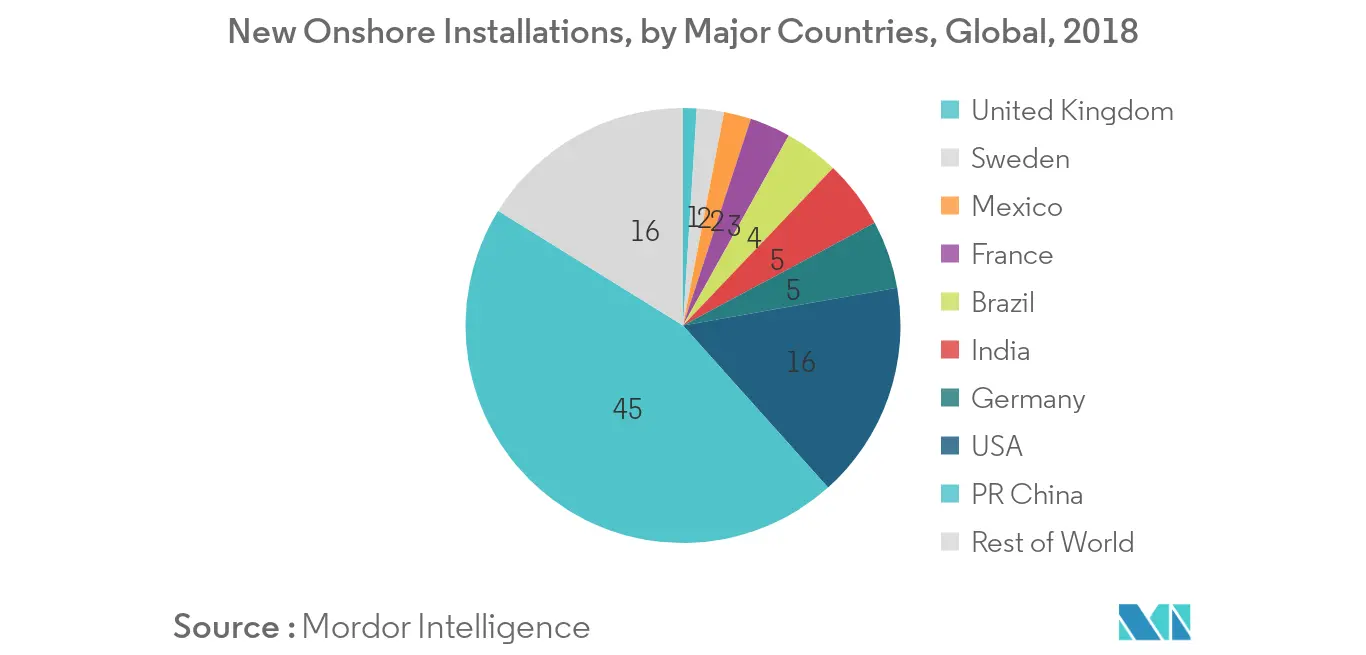
Asia-Pacific to Dominate the Market
- The Asia-Pacific is dominating the wind turbine market with the highest total installed capacity during 2018. The region shares nearly 44% of the total installed capacity of the world.
- China shares the maximum installed capacity in the region, with nearly 23 GW wind energy addition in 2018, and has been the leading country in the region since 2009, with the significant presence of both onshore and offshore wind energy market.
- China onshore market installed 21.2 GW in 2018. The 206 GW total installations at the end of 2018 became the first market to surpass 200 GW of total installed capacity, reaching its target of 200 GW two years earlier (based on the Five Year-Plan 2016-2020).
- As of end of 2018, China held the largest wind power generation capacity in the world. Wind energy accounted for 366 TWh of electricity in 2018 increasing by 24.1% compared to that in 2017. The trend is likely to remain the same, owing to the increasing number of wind power projects in the country.
- During the forecast period, the region is expected to have significant growth in the wind turbine shaft market. Though the region is dominated by coal-powered plants, China is expected to reduce the uses of coal-powered plants by nearly 40% in the coming years to meet the climate goal as stipulated in the Paris Agreement. The reduction in coal power plants is expected to help in the expansion of wind energy and, thereby, the wind turbine shaft market.
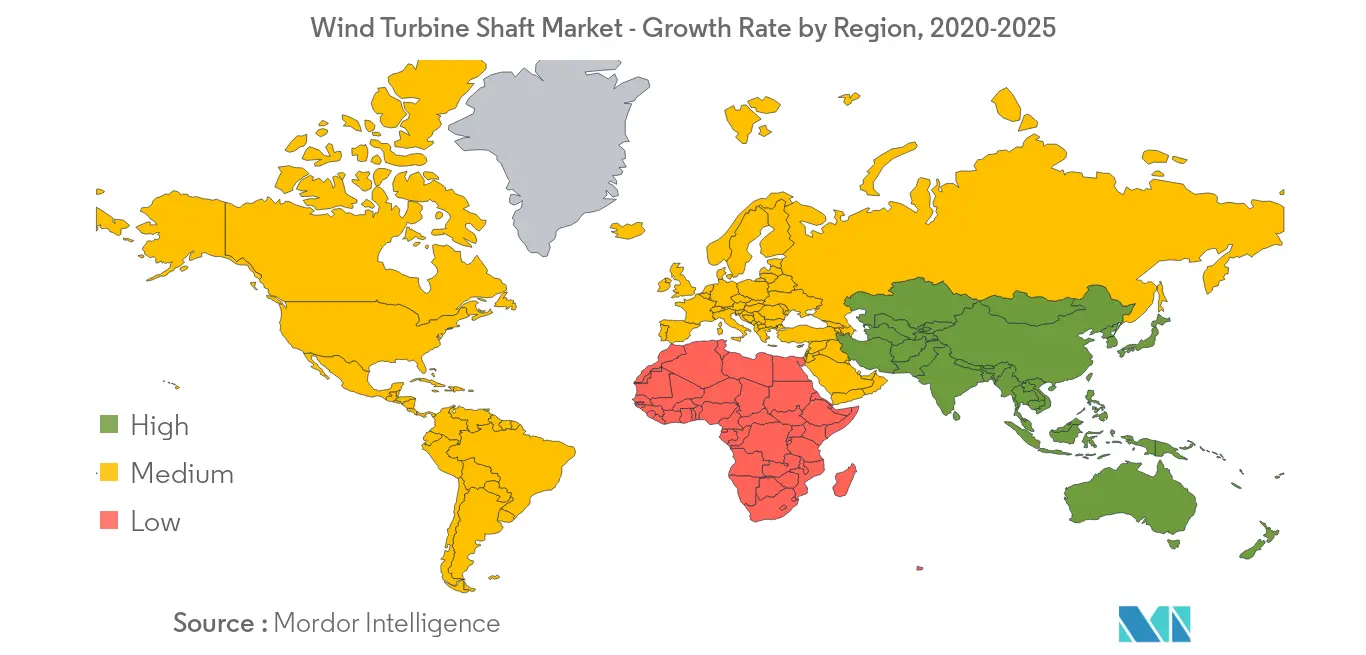
Competitive Landscape
The wind turbine shaft market is fragmented. Some of the key players in the market include Schaeffler Technologies AG & Co. KG, Jiangyin Zenkung Forging Co., Ltd, Luoyang Yujie Industry & Trade Co. Ltd, Western Machine Works Inc., and Broadwind Energy, Inc.
Wind Turbine Shaft Industry Leaders
-
Schaeffler Technologies AG & Co. KG,
-
Jiangyin Zenkung Forging Co.
-
Western Machine Works Inc.
-
Broadwind Energy Inc
-
Luoyang Yujie Industry & Trade Co. Ltd
- *Disclaimer: Major Players sorted in no particular order
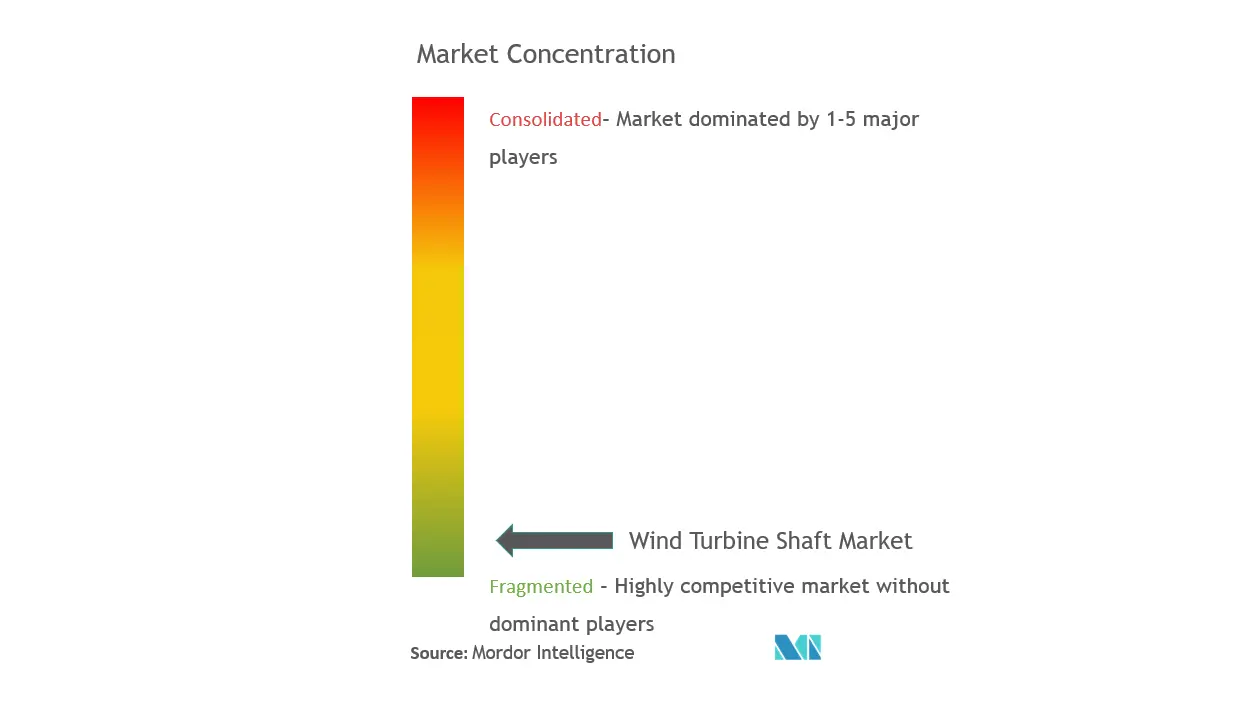
Global Wind Turbine Shaft Market Report Scope
The wind turbine shaft market report include:
| Onshore |
| Offshore |
| North America |
| Asia-Pacific |
| Europe |
| South America |
| Middle-East and Africa |
| Location of Deployment | Onshore |
| Offshore | |
| Geography | North America |
| Asia-Pacific | |
| Europe | |
| South America | |
| Middle-East and Africa |
Key Questions Answered in the Report
What is the current Wind Turbine Shaft Market size?
The Wind Turbine Shaft Market is projected to register a CAGR of greater than 3% during the forecast period (2025-2030)
Who are the key players in Wind Turbine Shaft Market?
Schaeffler Technologies AG & Co. KG,, Jiangyin Zenkung Forging Co., Western Machine Works Inc., Broadwind Energy Inc and Luoyang Yujie Industry & Trade Co. Ltd are the major companies operating in the Wind Turbine Shaft Market.
Which is the fastest growing region in Wind Turbine Shaft Market?
Asia Pacific is estimated to grow at the highest CAGR over the forecast period (2025-2030).
Which region has the biggest share in Wind Turbine Shaft Market?
In 2025, the Asia Pacific accounts for the largest market share in Wind Turbine Shaft Market.
What years does this Wind Turbine Shaft Market cover?
The report covers the Wind Turbine Shaft Market historical market size for years: 2020, 2021, 2022, 2023 and 2024. The report also forecasts the Wind Turbine Shaft Market size for years: 2025, 2026, 2027, 2028, 2029 and 2030.
Page last updated on:
